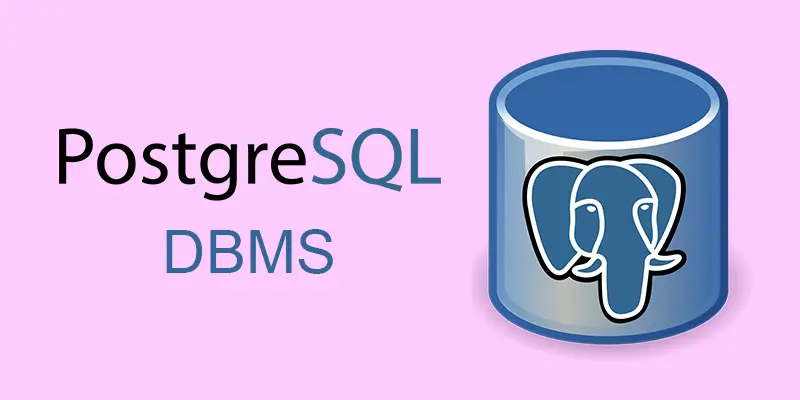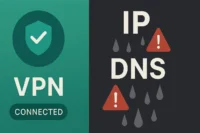PostgreSQL Tutorial | Definition, Example, History, and Benefits
Published: 29 Dec 2024
Step-By-Step Tutorial for PostgreSQL Beginners
PostgreSQL is a strong, open-source database system that helps you store, organize, and manage data efficiently. This tutorial covers everything from basic database concepts to advanced features, helping you understand how to use PostgreSQL effectively for various applications. Whether you’re a beginner or an experienced user, you’ll learn how to create, query, and manage databases with ease.
What is PostgreSQL used for with a Real Example?
PostgreSQL is an open-source database management system (DBMS) that helps store and organize data. It uses tables to structure data, and you can access it using SQL (Structured Query Language). PostgreSQL is known for being reliable, flexible, and capable of handling complex data tasks, making it ideal for both small projects and large-scale applications. It also supports features like data security, custom functions, and advanced querying.
Example of PostgreSQL
There are some popular examples of PostgreSQL:
- E-commerce websites: Store customer orders, product details, and inventory.
- Social media platforms: Manages user profiles, posts, and interactions.
- Data analytics: Organizes large data sets for analysis and reporting.
- Financial records: Tracks transactions, payments, and account details.
- Mobile apps: Stores user data, preferences, and app activity securely.
History and Evolution of PostgreSQL Database
PostgreSQL’s history began in the 1970s at the University of California, Berkeley, with a project called Ingres, designed to explore new ways of managing data. In 1986, Professor Michael Stonebraker, who led the Ingres project, started another project called Postgres, short for “post-Ingres,” to expand on the ideas and add more advanced features.
In the 1990s, Postgres evolved to support SQL (Structured Query Language), the language commonly used in databases, and was renamed PostgreSQL. Since then, it has continued to grow as an open-source project, with contributions from developers around the world who have added powerful features to make it stable, flexible, and secure. Today, PostgreSQL is widely used in many fields for its reliability and ability to handle complex data tasks.
PostgreSQL is unique because it combines powerful features with flexibility, making it suitable for a wide range of projects.
- Flexible data types: You can create custom data types to fit your needs.
- Efficient data organization: It allows advanced data organization with table inheritance.
- Strong data protection: With powerful locking methods, it keeps data safe from conflicts.
- Reliable relationships: Enforces foreign keys, ensuring data stays connected correctly.
- Advanced queries: Supports views, rules, and subqueries for more control in data access.
- Error handling: Nested transactions (savepoints) make it easy to handle errors without losing data.
- Smooth multitasking: Multi-version concurrency control (MVCC) allows many users to work at once without slowing down.
- Data backup and recovery: Point-in-time recovery helps you restore data to any specific time if needed.
- Cross-platform support: Works smoothly on Windows Server and other operating systems.
- Data replication: Asynchronous replication keeps data up-to-date across multiple locations.
| Key benefits of using PostgreSQL in web development |
|---|
|

How does PostgreSQL compare to MySQL and NoSQL databases?
MySQL versus PostgreSQL
- PostgreSQL is known for being more powerful and flexible. It supports advanced features like custom data types and complex queries, making it a great choice for handling complex data and large applications.
- MySQL is easier to set up and faster for simple read-heavy applications. It is commonly used for websites and smaller projects where you don’t need the advanced features that PostgreSQL offers.
PostgreSQL versus NoSQL
- PostgreSQL is a relational database (SQL), meaning it stores data in tables with strict relationships between them. It’s best for applications needing complex transactions and data integrity.
- NoSQL databases (like MongoDB) are non-relational and are great for handling large volumes of unstructured data, like documents or key-value pairs. They are often used in applications with flexible or rapidly changing data models, such as social media apps or big data projects.
| Large Companies Using PostgreSQL in Production |
|---|
Here’s a list of major large-scale users of PostgreSQL:
|
What Makes PostgreSQL Different from other DBMS?
PostgreSQL is unique because it combines powerful features that other databases don’t always offer.
- Advanced Features: It supports complex data types, custom functions, and powerful query capabilities, allowing users to do more with their data compared to other databases.
- Open-Source and Free: PostgreSQL is free to use, and its source code is open, meaning anyone can modify or improve it to fit their specific needs.
- Strong Data Integrity: It ensures data is accurate and consistent with features like ACID compliance, which helps prevent data corruption and ensures safe transactions.
Conclusion About Using PostgreSQL for Your Projects
PostgreSQL is a powerful, reliable, and flexible database system that stands out for its advanced features, strong data integrity, and open-source nature. It’s ideal for handling complex data and large-scale applications, making it a popular choice for businesses and developers worldwide. Whether you’re building a small website or managing large datasets, PostgreSQL offers the tools you need to store, manage, and protect your data efficiently.
FAQS – DBMS PostgreSQL
You can use online PostgreSQL editors like SQL Fiddle or pgAdmin Cloud to write and execute SQL queries directly in your browser. These platforms let you interact with a PostgreSQL database without needing to install anything on your computer.
To install PostgreSQL, go to the official PostgreSQL website, choose your operating system (Windows, macOS, or Linux), and follow the installation instructions. The installer will guide you through the setup process, including setting up the database server.
You can download PostgreSQL from the official PostgreSQL website: https://www.postgresql.org/download/. It provides the latest versions for different operating systems.
PostgreSQL is a powerful, open-source relational database system that stores and manages data in an organized way using tables. It allows you to create, read, update, and delete data using SQL (Structured Query Language). PostgreSQL is known for its stability, flexibility, and advanced features, making it a popular choice for developers and businesses.
SQL is a language, while PostgreSQL is a database system that uses SQL. So, you use SQL to talk to PostgreSQL.
No, it’s not a programming language. PostgreSQL works with backend languages like Python or Java to manage data.
PostgreSQL is known for its powerful features and flexibility. MySQL is simpler, but PostgreSQL is better for complex data work.
No, PostgreSQL is not a REST API. But you can connect it to REST APIs using tools like PostgREST.
PostgreSQL is mostly written in the C language. It also supports user-defined functions in languages like PL/pgSQL, Python, and SQL.
pgAdmin is the most popular tool for managing PostgreSQL. It’s free and user-friendly.

- Be Respectful
- Stay Relevant
- Stay Positive
- True Feedback
- Encourage Discussion
- Avoid Spamming
- No Fake News
- Don't Copy-Paste
- No Personal Attacks

- Be Respectful
- Stay Relevant
- Stay Positive
- True Feedback
- Encourage Discussion
- Avoid Spamming
- No Fake News
- Don't Copy-Paste
- No Personal Attacks





